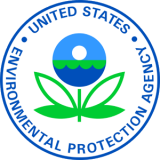EPA Provides $1.2 Million to Hypoxia Task Force States, Including Iowa and Missouri, and Continues to Promote National Dialogue to Reduce Excess Nutrients and Enhance the Nation's Waters
Environmental News
FOR IMMEDIATE RELEASE

“Different states have different needs and we want to be flexible to help each state make progress in ways that work best for them, their partners, and their stakeholders,” said EPA Assistant Administrator for Water David Ross. “Focusing our efforts on local solutions and collaborative efforts is key as we make progress on improving water quality in this critical watershed.”
The HTF provides direction and support to improve water quality in local waterways and the Gulf of Mexico. By providing this funding to HTF states, EPA is further empowering our state partners to implement tailored and effective efforts, including updating nutrient management plans, developing water quality trading programs, and demonstrating best practices in high-priority watersheds.
This funding complements the Trump Administration’s regional and national efforts to reduce excess nutrients in our nation’s waters. Just last week, EPA and the U.S. Department of Agriculture (USDA) hosted the National Nutrient Finance Forum to continue public engagement on innovative financing strategies and opportunities to fund the deployment of projects across the landscape to improve water quality. Leveraging existing federal and state programs, partnering with public and private sources of funding, and promoting market-based approaches can help reduce excess nutrients and improve water quality at the watershed scale.
“This administration hosted the National Nutrient Finance Forum to encourage creative problem-solving and highlight ways that private and public sector funds can be leveraged to further reduce excess nutrients in our nation’s waters,” said Principal Deputy Assistant Administrator for EPA’s Office of Water Anna Wildeman. “This forum is the capstone to a summer-long outreach and engagement effort, which has been met with great interest across public and private sector stakeholders.”
“USDA has an extensive and successful history of helping agricultural producers and forest landowners seek traditional and innovative solutions for improving water quality on or near their operations,” said Natural Resources Conservation Service Deputy Chief for Programs Jimmy Bramblett. “We are committed to using our established and diverse partnerships to explore innovative approaches to improving water quality on privately-owned working lands.”
These two efforts are the latest in a series of Trump Administration initiatives to reduce excess nutrients and improve water quality.
In December 2018, EPA and the U.S. Department of Agriculture (USDA) issued a letter to state co-regulators encouraging a reinvigoration of state, tribal and federal efforts to reduce excess nutrients in waterways, with a focus on market-based and other collaborative approaches. In February 2019, EPA signed a Memorandum of Understanding with the Water Research Foundation to develop affordable technologies to recycle nutrients from livestock manure and also issued a new water quality trading policy memorandum intended to promote nutrient reductions and water quality improvements at a lower cost, using market-based mechanisms.
On May 22, 2019, EPA issued new recommendations for water quality criteria and swimming advisory values for two cyanotoxins. EPA also published infographics for state and stakeholder use to help inform the public of what harmful algal blooms may look like and how to prevent exposure to humans and pets.
In July 2019, EPA released the Cyanobacteria Assessment Network (CyAN) mobile app, which uses satellite data to alert users that a harmful algal bloom could be forming, based on specific changes in the color of the water in more than 2,000 of the largest lakes and reservoirs across the United States.
Last week, EPA announced awarding more than $7.5 million in Farmer to Farmer Cooperative Agreements to fund projects that improve water quality, habitat, and environmental education in the Gulf of Mexico watershed. These grants promote innovative, market-based solutions for monitoring and improving water quality while also maintaining a vital agricultural economy.
On August 21, EPA and four federal partners announced the winners of the Nutrient Sensor Action Challenge, a technology-accelerating, water quality challenge that is focused on nutrient management. This year’s winners demonstrated how data from low-cost water quality monitoring sensors can be used to inform local-scale nutrient management decisions.
Learn more about EPA’s efforts to address excess nutrients.
# # #
Learn more about EPA Region 7
View all Region 7 news releases
Connect with EPA Region 7 on Facebook: www.facebook.com/eparegion7
Follow us on Twitter: @EPARegion7
